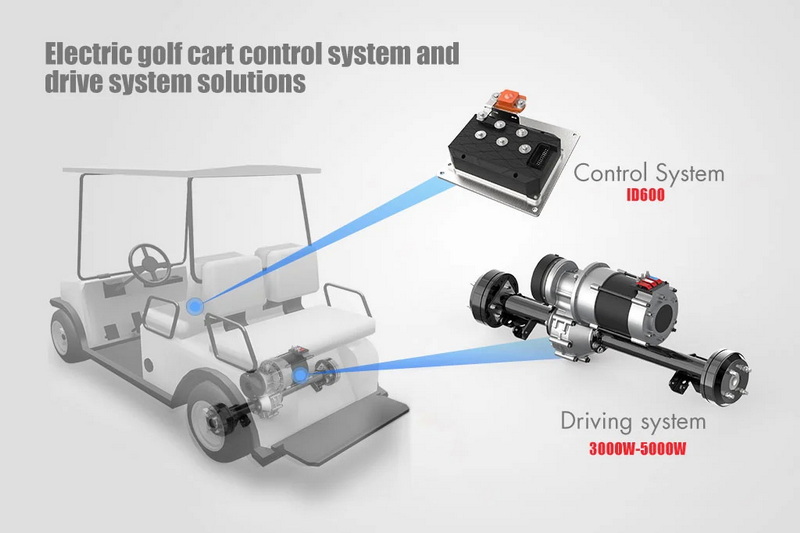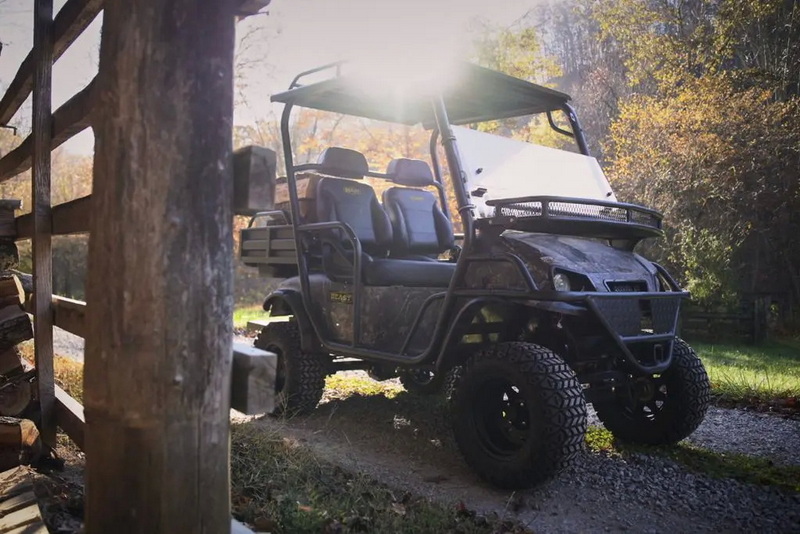Content Menu
● Understanding Electric Golf Carts
● Planning Your Project
● Step-by-Step Guide to Building Your Electric Golf Cart
>> Step 1: Constructing the Chassis
>> Step 2: Installing the Electric Motor
>> Step 3: Setting Up the Battery System
>> Step 4: Connecting the Controller
>> Step 5: Installing Wheels and Tires
>> Step 6: Wiring Electrical Components
>> Step 7: Final Touches
● Maintenance Tips for Your Electric Golf Cart
● Safety Considerations
● Enhancing Performance
● Conclusion
● FAQ
>> 1. What type of batteries should I use for my electric golf cart?
>> 2. How fast can an electric golf cart go?
>> 3. Can I use my electric golf cart on public roads?
>> 4. How long does it take to build an electric golf cart?
>> 5. What maintenance does an electric golf cart require?
Building an electric golf cart can be an exciting project for DIY enthusiasts. This guide will walk you through the essential steps, materials, and considerations needed to create your own electric golf cart. Whether you want to customize an existing cart or build one from scratch, this article provides the knowledge and inspiration to get started.

Understanding Electric Golf Carts
Electric golf carts are designed to transport golfers and their equipment around the golf course. They are environmentally friendly, quieter than gas-powered carts, and can be customized to suit individual preferences. Before diving into the building process, it's essential to understand the components that make up an electric golf cart:
- Chassis: The frame of the cart, which supports all other components.
- Electric Motor: The heart of the cart, responsible for propulsion.
- Batteries: Provide the necessary power to the motor. Common types include lead-acid and lithium-ion batteries.
- Controller: Regulates the power from the batteries to the motor.
- Wheels and Tires: Essential for mobility and stability.
- Body: The outer shell that provides aesthetics and protection.
- Seating: Comfortable seating for passengers.
- Accessories: Additional features like lights, storage compartments, and sound systems.
Planning Your Project
Before you start building, consider the following steps:
1. Determine Usage: Decide how you intend to use the golf cart—whether for personal use on a golf course or for other purposes like neighborhood transportation.
2. Establish a Budget: Costs can vary significantly based on components. Have a clear financial plan covering materials, tools, and any additional features.
3. List Materials and Tools Needed:
- Chassis (can be purchased or built)
- Electric motor
- Batteries
- Controller
- Wiring and connectors
- Wheels and tires
- Body panels
- Seats
4. Sketch Your Design: Consider size, shape, and features you want. You can find inspiration from existing electric golf carts or customize your design.
Step-by-Step Guide to Building Your Electric Golf Cart
Step 1: Constructing the Chassis
If you choose to build your chassis, use sturdy materials like steel or aluminum. Ensure that it is strong enough to support the weight of the cart and its passengers. Alternatively, purchasing a pre-made chassis can save time.
When constructing your chassis:
- Use a design that accommodates your desired dimensions.
- Ensure proper welding techniques if you're using metal.
- Consider adding reinforcement in areas where stress is likely to occur.
Step 2: Installing the Electric Motor
Mount the electric motor onto the chassis securely. Ensure it is aligned with the drive system. Depending on your design, you may need to connect the motor to the rear axle or use a belt drive system. Choose a motor that provides adequate power for your intended use.
When selecting an electric motor:
- Look for one with sufficient torque for hill climbing if necessary.
- Consider a brushless motor for efficiency and longevity.
- Make sure it fits within your budget while meeting performance needs.

Step 3: Setting Up the Battery System
Choose the type of batteries you want to use. Lead-acid batteries are more affordable but heavier, while lithium-ion batteries are lighter with a longer lifespan. Install them in a secure compartment on the chassis, ensuring they are easily accessible for maintenance.
Battery setup considerations include:
- Using battery trays or enclosures to hold batteries securely.
- Ensuring proper ventilation if using lead-acid batteries due to gas emissions during charging.
- Connecting batteries in series or parallel depending on desired voltage and capacity.
Step 4: Connecting the Controller
The controller regulates power from the batteries to the motor. Follow manufacturer instructions to connect it properly. Ensure all connections are secure and insulated to prevent short circuits.
Key points when connecting your controller:
- Ensure compatibility between your motor and controller specifications.
- Use appropriately rated wiring for current loads.
- Test connections before finalizing installation.
Step 5: Installing Wheels and Tires
Attach wheels and tires to your chassis. Choose tires suitable for your driving terrain—grass, pavement, or rough terrain—as they significantly affect performance and comfort.
When selecting wheels and tires:
- Consider larger tires for off-road capabilities.
- Ensure tires have adequate tread for traction based on usage conditions.
- Check weight ratings of wheels if planning on carrying heavy loads.
Step 6: Wiring Electrical Components
Carefully wire all electrical components, ensuring secure connections. Conduct thorough testing of your cart's motor, brakes, and steering before taking it out for a ride.
Important wiring tips include:
- Use color-coded wires for easy identification during troubleshooting.
- Keep wiring neat and organized to avoid tangling or damage.
- Protect wiring from moisture exposure with waterproof connectors.
Step 7: Final Touches
After testing everything works correctly, paint or finish your body as desired and add any final accessories like lights or storage compartments.
Additional finishing touches might include:
- Adding a windshield for protection against wind and debris.
- Installing a horn or safety lights if using in public areas.
- Customizing seats with cushions or covers for added comfort.
Maintenance Tips for Your Electric Golf Cart
To keep your electric golf cart in top condition:
- Regularly check battery levels and connections.
- Keep tires properly inflated.
- Clean electrical contacts to prevent corrosion.
- Inspect mechanical components regularly for wear.

Safety Considerations
Safety should always be a priority when building and operating an electric golf cart:
- Wear protective gear while working on construction (gloves, goggles).
- Follow electrical safety practices when handling batteries and wiring.
- Always test drive in safe environments before taking it onto public paths.
Enhancing Performance
To maximize performance from your electric golf cart:
- Upgrade components gradually as needed (better batteries or motors).
- Regularly maintain tire pressure for optimal efficiency.
- Consider adding regenerative braking systems if feasible; they can help recharge batteries during operation.
Conclusion
Building an electric golf cart is not only rewarding but also allows for customization tailored to personal needs. By following these steps carefully—from planning through execution—you can create a reliable electric vehicle that enhances your golfing experience or serves other practical purposes.

FAQ
1. What type of batteries should I use for my electric golf cart?
Lead-acid batteries are cost-effective but heavier; lithium-ion batteries are lighter with a longer lifespan but more expensive.
2. How fast can an electric golf cart go?
Most electric golf carts can reach speeds between 15–25 mph depending on motor specifications and battery power.
3. Can I use my electric golf cart on public roads?
Usage regulations vary by location; check local laws regarding street legality before using your cart on public roads.
4. How long does it take to build an electric golf cart?
The time required varies based on skill level and resources but typically ranges from several days to weeks.
5. What maintenance does an electric golf cart require?
Regular maintenance includes battery checks, tire inflation, cleaning electrical contacts, and inspecting mechanical components for wear.











































